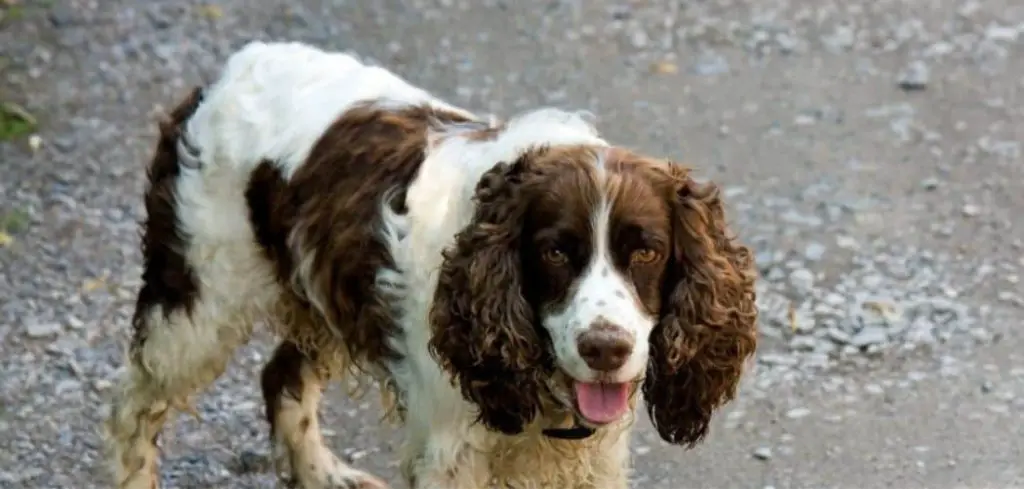It can be alarming to discover a lump on a dog, even when there are no other symptoms. While some lumps are harmless, others may signal an underlying condition that requires veterinary attention.
We outline the possible reasons for a lump on a dog with no other symptoms, what you can do at home, and when to seek veterinary help.
Table of Contents
Lump on Dog No Other Symptoms — Why It Happens
A lump on a dog without additional symptoms can stem from several different causes. In many cases, these growths are benign, such as fatty tumors or cysts. However, sometimes a lump may be an early sign of infection, inflammation, or even cancer, even when the dog seems otherwise healthy. Age, breed, and genetics can also play a role in whether a dog develops skin masses or growths.
Because some lumps remain harmless while others progress over time, it is important for dog owners to understand the possible causes.

Lump on Dog No Other Symptoms: Possible Causes
Lipomas (Fatty Tumors)
Lipomas are one of the most common causes of lumps in dogs. They are made of fatty tissue and usually appear just under the skin.
Owners often notice them on the chest, belly, or legs. While lipomas are almost always benign, they can grow larger over time and become uncomfortable, especially if they press against muscles or joints.
Because lipomas do not cause pain or illness, a dog may show no other symptoms beyond the lump itself.
Read more: Dog Shivering No Other Symptoms (When to worry)
Sebaceous Cysts
A sebaceous cyst is a blocked oil gland that forms a small, raised lump. These cysts can remain stable for long periods, and some may even rupture on their own.
Dogs with sebaceous cysts often show no signs of discomfort, which is why they can go unnoticed until the lump is discovered during petting or grooming.
While usually harmless, cysts can become irritated or infected, leading to redness, swelling, or discharge.
Benign Skin Growths
Many dogs develop benign skin growths, such as warts (papillomas) or fibromas. These lumps are generally harmless and may be linked to genetics, aging, or viral exposure.
They often appear as small, raised bumps on the skin surface. Because they rarely cause pain or illness, the dog may seem perfectly normal apart from the lump.
Monitoring these growths for changes in size, shape, or color is important, as sudden changes may warrant veterinary evaluation.
Infections or Abscesses
Sometimes a lump develops due to an infection under the skin. This may occur after a bite, scratch, or insect sting. An abscess often begins as a firm swelling that may later soften and leak fluid.
In the early stages, when the infection is contained, a dog may show no symptoms other than the lump. However, abscesses can become painful and may cause fever or lethargy if untreated.
Prompt veterinary care ensures proper drainage and treatment to prevent complications.
Mast Cell Tumors
Mast cell tumors are one of the more concerning causes of lumps in dogs. They can appear similar to benign growths but have the potential to spread internally.
A dog with a mast cell tumor may show no symptoms in the early stages, making early detection critical. These tumors often change in size, swell, or become irritated.
Because mast cell tumors can be aggressive, any unexplained lump should be checked by a veterinarian, even if the dog seems otherwise healthy.
Soft Tissue Sarcomas
Soft tissue sarcomas are another type of cancerous growth that can initially appear as a painless lump. They arise from connective tissues under the skin and may feel firm to the touch.
Like mast cell tumors, these sarcomas may not cause noticeable symptoms until they progress. Early intervention improves the chances of successful treatment, which is why veterinary evaluation is crucial.
What to Do If Your Dog Has A Lump With No Other Symptoms
If you find a lump on your dog, begin by calmly assessing its size, location, and feel. Gently touch the area without pressing too hard, and note whether it seems soft, firm, movable, or attached to deeper tissues.
Keep a record of when you first noticed the lump and track any changes over time. Regular monitoring helps your veterinarian determine whether it is growing or behaving unusually.
While some lumps remain harmless, it is never safe to assume this without veterinary input. At home, you can help your dog by keeping the area clean, avoiding excessive touching, and preventing scratching or chewing that could cause irritation.
If the lump changes suddenly, becomes red, or starts oozing, schedule a veterinary appointment promptly.
When to Call or Visit Your Vet
Even if a lump appears harmless, veterinary evaluation is always recommended. A veterinarian can examine the lump, possibly perform a fine-needle aspirate, and determine whether further testing is needed.
Call your vet promptly if the lump:
Grows rapidly in size.
Changes in color, texture, or shape.
Becomes painful, warm, or swollen.
Starts bleeding, leaking, or ulcerating.
Appears alongside new symptoms such as weight loss, lethargy, or reduced appetite.
Because some cancers can mimic benign lumps in the early stages, professional assessment provides peace of mind and ensures your dog receives the right care.
Key Takeaway
A lump on a dog with no other symptoms can be either harmless or serious, which makes veterinary evaluation essential. While benign growths like lipomas and cysts are common, certain cancers can also present as simple lumps in their early stages.
Monitoring the lump, keeping records, and seeking veterinary advice provide the best protection for your pet’s health. With timely care, many dogs continue to live comfortably even after lumps are discovered.
